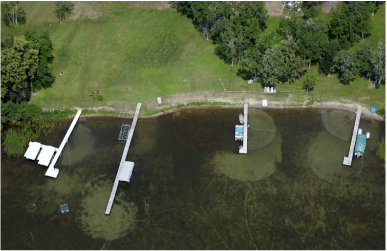 Image Credit: Star Tribune, Brian Peterson
Image Credit: Star Tribune, Brian Peterson In a recent editorial published in the Star Tribune, Ron Way and Steve Berg discuss the irrevocable damage that has been done to Minnesota's lake through poor land-use practices. It's a dismal picture, especially for the southern part of our state: "Agriculture has drained or poisoned the prairie lakes and potholes of southern and southwestern Minnesota. Forget about them; they’re gone." These words are difficult for many of us to take. "Forget about them?" Really? There's always a chance for redemption, right?
Actually as it turns out, for lakes, it is virtually impossible to restore a lake to pre-settlement conditions once nutrient loading has reached a certain point. Lakes with a long history of phosphorus loading achieve a "supercharged" state in which so much phosphorus is stored in the sediments that the lake ecosystem simply can't keep up and the lake will become permanently impaired. Once a lake has reached this point, even the best shoreline practices will have virtually no effect to improve water quality. The phorphorus is there for good. The damage has been done.
Fortunately there is still hope for many lakes in northern Minnesota provided we act now to protect them. "But saving those lakes will require two extraordinary acts of courage: first, an acknowledgment that the laissez-faire path we’ve followed for 50 years has failed, and, second, a new resolve to pass and enforce land-use regulations that diminish the impact of human settlement. The aim shouldn’t be to inhibit future development but to change development’s character in ways that protect lakes and their surrounding watersheds."
The Brainerd Lakes Area is on the edge of becoming permanently impaired due largely to rapid development of our lake shore. Small summer cabins are being turned into large year-round residences at an increasingly rapid pace. The big question is, do we have the courage to limit ourselves and our development to protect the lakes that we love? Let's hope so! The future of our lakes, our lifestyle, and our economy depends on it!
Actually as it turns out, for lakes, it is virtually impossible to restore a lake to pre-settlement conditions once nutrient loading has reached a certain point. Lakes with a long history of phosphorus loading achieve a "supercharged" state in which so much phosphorus is stored in the sediments that the lake ecosystem simply can't keep up and the lake will become permanently impaired. Once a lake has reached this point, even the best shoreline practices will have virtually no effect to improve water quality. The phorphorus is there for good. The damage has been done.
Fortunately there is still hope for many lakes in northern Minnesota provided we act now to protect them. "But saving those lakes will require two extraordinary acts of courage: first, an acknowledgment that the laissez-faire path we’ve followed for 50 years has failed, and, second, a new resolve to pass and enforce land-use regulations that diminish the impact of human settlement. The aim shouldn’t be to inhibit future development but to change development’s character in ways that protect lakes and their surrounding watersheds."
The Brainerd Lakes Area is on the edge of becoming permanently impaired due largely to rapid development of our lake shore. Small summer cabins are being turned into large year-round residences at an increasingly rapid pace. The big question is, do we have the courage to limit ourselves and our development to protect the lakes that we love? Let's hope so! The future of our lakes, our lifestyle, and our economy depends on it!


